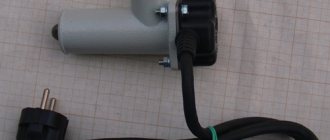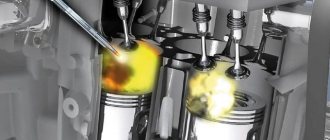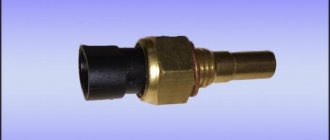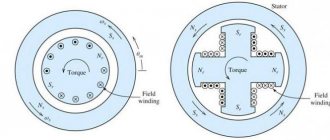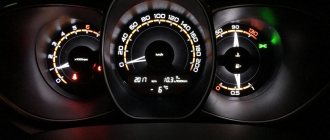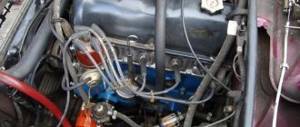How to calculate engine hours in kilometers and what is an engine hour
The engine hour is the time - one hour during which the engine has been running.
But it's not that simple! The engine hour is still not entirely linear time. This is one hour of operation of the crankshaft (its revolutions are counted on the tachometer) of the engine at certain speeds or, in relation to passenger cars, when the car is moving at a certain (usually low) speed and in a certain gearbox.
Such a characteristic as engine hours affects a number of indicators and recommendations for a particular car, the main ones being mileage, its ratio to engine life, the engine life itself is also more correctly calculated in engine hours, and not just in kilometers of the car, frequency of oil changes and etc.
First of all, you should know that usually the manufacturers of most cars set approximately the same conditions for calculating engine hours, and most often 200-250 engine hours are equal to 15 thousand kilometers in the case of a calm, measured drive with a moderate amount of traffic jams and, in general, the engine idling (after all, in this case, the mileage does not increase, but the engine hours do). But if, for example, you prefer aggressive driving at high engine speeds, often sit in traffic jams, or generally often stand with the engine running (heating up in a stationary car, for example), then this ratio increases in favor of engine hours - i.e. the latter becomes more than the mileage. And in this case, you use up the life of the engine (and some other units) faster, you need to change the engine oil more often, and so on. And if you often drive on the highway in a relaxed manner, your car rarely sits idle with the engine running and is more often in motion, then the calculation of engine hours by mileage should be made based on the fact that for the same 200-250 engine hours the mileage can reach 20,000 kilometers. However, if we are talking about regularly replacing fluids and oils in a car, based on these data, then this is exactly the case when “it’s better to be safe than sorry.”
Most likely, you will find the calculation of engine hours (information on the calculation procedure: about the vehicle speed, crankshaft speed, etc.) in the instruction manual for your car model, or in its detailed technical specifications.
However, accurate information about the number of engine hours traveled is in the “brains” (on-board computers) of some car models, and you can find out what the number of engine hours is and most accurately correlate their number with the car’s mileage by reading this information from the car’s computer processor.
Vehicle mileageCar informationCalculationsEngineEngine operation
After all, friends also love interesting articles!
How to convert engine hours to kilometers?
Just as in the case of converting a tractor's engine hours into real-time clocks, beginners have difficulty converting engine hours into kilometers traveled by the tractor. In the second case, many more questions may arise, since it is almost impossible to accurately convert engine hours into kilometers - this can only be done relatively and approximately.
First of all, you need to remember that some manufacturers of agricultural machinery set almost identical conditions for calculating engine hours. In most cases, 50 of these units equals 5 kilometers traveled by the tractor under moderate loads. At the same time, if the tractor very often works under intense loads and regularly performs the functions of an assistant, both in the garden and in the local area, then the number of engine hours worked by it confidently increases upward without significant changes in its mileage.
It is important to remember that each tractor uses the motor resources inherent in its engine and other components differently. You can always find more accurate information about the features of calculating this important parameter in the operating instructions for the agricultural machine.
More accurate data on engine hours worked and kilometers traveled can be provided by the memory of the on-board computer, but this kind of device is provided only in the latest models of tractors put on the market, and then only in large-sized units designed to work on large areas.
Calculation example
Largus van Loan calculator
Let's assume that a diesel forklift was rented to load trucks and unload wagons. It works for the entire shift (8 hours), without overcoming slopes and without using the maximum fork lift height, since the sites it serves are located at a height of only 1,500-2,000 mm. The maximum engine speed is only used when the unit is accelerating to cover the distance between the loading and unloading areas. This operation takes approximately 30% of working time.
But it may be so. The company operates 24 hours a day. But shipment of materials (products) during this time is carried out only 2 times for 2 hours. The remaining time the loader is operated with minimal or medium intensity.
Accordingly, the coefficient characterizing the ratio of operating time with load (maximum/minimum) is lower in the second case. Its value can be accurately determined by measuring the time during which the loader overcomes the resistance of the surface (road) and lifts loads of maximum weight. Summing up the indicators, we obtain the operating time during which maximum loads are applied to the unit. And it is this time that needs to be subtracted from the duration of the (total) one shift.
The required coefficient is the ratio of operating time with minimum and maximum load (70% and 30%, respectively). Therefore, if the forklift was used with a maximum load of 30%, then the value of the coefficient is found by dividing 70% by 30% (that is, the value is 2.3).
For example, the well-known AX50 loader model from Komatsu is equipped with a 4D92E power unit. Its power is 33.8 hp. With. In the event that 30% of the entire work shift is operated at maximum speed, then the fuel consumption for 1 engine hour will be: 33.8x202/(1000x0.85x2.3) = 3.49 liters.
Engine hour and machine hour - what's the difference?
Counting the engine hours spent by a tractor helps to understand the degree of wear on the most important moving mechanisms of the unit.
The formula used for the calculation is extremely simple and gives the tractor owner the following data:
- when operating an agricultural machine at idle speed, 1 engine hour is equivalent to one full hour of real time;
- with normal load on the tractor, one engine hour is accelerated by about a third, thus amounting to 40 minutes of real time;
- in case of operation of the unit under maximum loads, 1 engine hour is equal to 20 minutes of real time.
Using this information, even a novice farmer can easily convert engine hours to real-time hours. It should be remembered that the final result of converting engine hours into real-time clocks is always slightly different for a gasoline engine and a diesel engine. The main reason for this is the higher power of the latter, which is why it spends a little less time on completing tasks.
Just as in the case of converting a tractor's engine hours into real-time clocks, beginners have difficulty converting engine hours into kilometers traveled by the tractor. In the second case, many more questions may arise, since it is almost impossible to accurately convert engine hours into kilometers - this can only be done relatively and approximately.
First of all, you need to remember that some manufacturers of agricultural machinery set almost identical conditions for calculating engine hours. In most cases, 50 of these units equals 5 kilometers traveled by the tractor under moderate loads. At the same time, if the tractor very often works under intense loads and regularly performs the functions of an assistant, both in the garden and in the local area, then the number of engine hours worked by it confidently increases upward without significant changes in its mileage.
It is important to remember that each tractor uses the motor resources inherent in its engine and other components differently. You can always find more accurate information about the features of calculating this important parameter in the operating instructions for the agricultural machine.
More accurate data on engine hours worked and kilometers traveled can be provided by the memory of the on-board computer, but this kind of device is provided only in the latest models of tractors put on the market, and then only in large-sized units designed to work on large areas.
Another important and no less common question is how to convert engine hours to machine hours. First of all, it should be clarified that this is almost impossible to do, since engine hour and machine hour are completely different concepts in their essence.
The engine hour is a conditional value that is determined taking into account the number of revolutions produced by the crankshaft of the tractor engine over a certain period of real time.
A machine hour is the amount of real time that had to be spent on manufacturing a specific product. In the case of agricultural machinery, this parameter indicates the time spent performing one or more actions - plowing, harrowing, sowing seeds or planting tuber crops.
The calculation of machine hours is usually carried out by the authorized competent body of the agricultural enterprise. This takes into account the time spent preparing the site, caring for the beds and transporting the crop. The data obtained is summarized, after which management receives data on the time that had to be spent on carrying out basic agricultural work.
It should be noted that the number of engine hours for gasoline and diesel engines is always slightly different. This is due to the fact that engines running on diesel fuel have more power - this allows you to carry out certain agricultural work faster. This feature is one of the main reasons why most manufacturers of agricultural machinery equip their units with diesel engines.
Often machine hours become an explanation of the difference between a tractor and a bulldozer. The fact is that the operation of a tractor, as a more maneuverable unit, gives the enterprise an important advantage in the form of accelerated completion of agricultural work. When using bulldozers, you have to spend much more time, which is why the latter are used much less frequently in agriculture.
The engine hour is a special unit of measurement of the load experienced by a running motor. It corresponds to one astronomical hour of crankshaft operation at idle or moderate speed (60 minutes at about 1500-1600 rpm). This indicator is not equal to mileage or operating time and is relevant primarily for small-capacity vehicles (motorcycles, including cross-country motorcycles), as well as special equipment, the operation of which is not assessed by the distance traveled.
There are different ways to calculate engine hours:
- The most accurate is based on crankshaft revolutions. 1 engine hour is 96,000 crankshaft revolutions (for convenience, you can round up to 100 thousand).
- In terms of time, this is approximately one hour of idling engine operation.
- Based on the fuel used.
The engine hours show the load of the working tractor
The engine hour indirectly informs the driver about some important points, the timely analysis of which determines the condition of the car. As is clear from the word itself, an engine hour is one hour of engine operation. However, not everything is so simple and we are not talking about linear time. This parameter is important for its influence on a number of indicators, the main of which is mileage and engine life. 1 engine hour is equal to 1 hour of engine operation at rated speed.
The engine hour is not always equal to the astronomical one, and depends on the number of crankshaft revolutions (average speed taking into account idle speed). That is, if the car is idling (for example, in a traffic jam), then the engine hour will be longer. And vice versa, when driving at speeds of 2-3 thousand, the duration of the engine hour will be less than the astronomical hour.
It is believed that 1 engine hour can be equated to 1 hour of engine operation at idle speed, but this is a very approximate method. Idle speed varies between vehicles. Only in passenger cars the spread ranges from 500 to 900 rpm, and, for example, in the MTZ-80 tractor they can reach 1500 rpm.
The crankshaft revolutions are displayed on the tachometer. The higher the speed, the faster the engine hour is consumed. Therefore, it is impossible to derive a single coefficient to find out how long the engine hour is. It all depends on the working conditions. For example, if a tractor or walk-behind tractor is running on light sandy soil with a cutter or potato planter, the operator will not need to maintain high speeds. And if the same tractor is pulling a truck out of a snowdrift or clearing wet snow, the load on the engine will be higher and the crankshaft will make more revolutions.
DIY KUHN on T-40 dimensions: drawings, photos
Only a laboratory analysis of oil waste can tell you most accurately about this. In the car manual, the manufacturer provides approximate information about when to change the engine oil. But in reality these numbers are very relative. In fact, the timing of engine oil changes is influenced by several factors: type and quality of fuel, oil characteristics, engine size, replacement method, condition of the car, total mileage, operating conditions.
But it is difficult to take them all into account, so the most common way of determining there are only two.
For example, for 10 thousand kilometers in city conditions (at an average speed of 20-30 km/h) this is 400-500 engine hours, and for 10 thousand kilometers when operating on the highway and in traffic-free mode (at an average speed of 80-120 km/h) - this is 100 engine hours. And if you focus not on mileage, but on the service life of oils by engine hours, then mineral water must be replaced after 150-170 engine hours, semi-synthetics - after 170-200, synthetics - after 200-250 engine hours (cheap) or 250-350 engine hours (top-end ).
The fact is that cars not only drive, but also sit in traffic jams a lot, and in winter it also takes a considerable amount of time to warm up. There is no movement of the car at such moments, but the engine still runs. Therefore, mileage as a guide to when to change engine oil becomes secondary. The engine hour does not take into account only the percentage of load on the engine, but it is still much more accurate compared to mileage.
Amateurs are guided by the frequency that manufacturers advise to adhere to. As a rule, this is 8-15 thousand kilometers or 1 year (one of the options is selected, whichever comes first). But these are just average numbers that do not reflect the true state of affairs in a particular car, which is influenced by several factors. Particularly important is such a “trifle” as the service life of motor oils.
In addition, recently there has been a tendency for manufacturers to increase the oil change interval to satisfy economic and environmental requirements. However, this is just another idea from marketers to attract customers, so you should not believe this innovation.
Machine hours refers to the time it takes one machine to complete a job and also takes into account the number of machines. For example, if one machine clears the street of snow for six hours, it is said that six machine hours were generated. If two machines were assigned to the same amount of work and they cleaned the street in three hours, the work time is multiplied by the number of machines, and the result is again six machine hours.
engine hours
Calculator for calculating the tax deduction for training in a driving school
10 months ago
Hour meter. Briefly, why you need it, how to install it, and how to use it.
Hour meter for Kayo T2 and other equipment. For reference, the engine hour time does not depend in any way on the revolutions. Watch…
2 years ago
Engine hours or kilometers. Changing the oil RIGHT! Just something complicated
After how many engine hours should you change the engine oil? How to calculate them yourself and how best to change them based on mileage...
6 months ago
Setting the engine hours. Test, what is the engine hour? on GR72T and Kawasaki KDX250
Setting the engine hours. Test, what is the engine hour? on GR72T and Kawasaki KDX250 We carried out various measurements of the engine meter with...
3 years ago
How to calculate ENGINE HOURS...?
Let's count the engine hours correctly! For those who want to support the channel - https://www.donationalerts.com/r/yuriy_serbin.
3 years ago
Life hack: mileage in km and engine hours
A very important question for the owner of any equipment. How to correctly interpret the concept of mileage per kilometer...
2 years ago
Hour meters from China with Aliexpress
Buy hour meters https://ali.pub/1n4a8b or https://ali.pub/1n4aga ️️️Expand description️️️ Subscribe...
3 years ago
mini - Hour meter reviewer with Ali
A brief overview of the engine hour meter. Link to Ali...
1 year ago
Hour meter for a heavy diesel walk-behind tractor - short and to the point
Review of the method for installing an hour meter on the diesel engine of my walk-behind tractor. I got the information from the channel...
2 years ago
Engine hours in Duster.
motor watch#tachometer#motor watch for car#tachometer for petrol tools.
3 years ago
Time meter, or rather engine hour meter + tachometer for a gas generator
Link: https://ali.pub/p1g8r There is a gas generator and its maintenance must be carried out in accordance with...
3 years ago
Super duper motorcycle hour meter with temp sensor. and other devices, tachometer RL-HM035T
We press the letters MORE, many links open below: RL-HM035T, Super duper motorcycle watch meter with sensor. temperatures...
2 years ago
Installing an hour meter on a walk-behind tractor
Installation of an inexpensive engine hour meter gadget purchased on Ali Express in order to control…
10 months ago
Installing a Chinese hour meter
Instagram https://www.instagram.com/chornyialex/ Facebook MotorsFun https://www.facebook.com/MotorsFunClub/
2 years ago
Tachometer, hour meter, for gasoline engines (gasoline tools, scooter, boat). Complete instructions!
The other day I received a long-awaited device from Ali, namely a tachometer/hour meter. This device helped me a lot...
3 years ago
About monitoring engine hours
Information material on monitoring engine hours and fuel consumption in. Mirror -…
2 years ago
Wialon Hosting. Engine hours and fuel consumption of equipment without movement. Part 1.
2 years ago
Dashboard. Part 2. Voltmeter and engine hours.
The work on the instrument panel has been completed, the instruments have been installed and connected (except for the mechanical indicator...
1 year ago
Engine hour corrector (winder) for JCB 3CX
All details at https://lipetsk-auto.ru/product/korrektor-schyotchika-motochasov-jcb-3cx.
an hour ago
How to calculate engine hours by mileage. When to change the oil.
How to calculate engine hours by mileage. When to change the oil. Correctly change the oil and do maintenance, orienting...
1 year ago
Mikhail Ilyin “Motor watches or scammers”
1 year ago
Maintenance on Avantis 250 / hour meter installation / Won tires
I decided to change the oil and install a motorcycle hour meter. Enjoy watching https://vk.com/club155294054 - motorcycle group...
2 years ago
Yamaha: 10-hour motorcycle!
Motocross in Kyiv. Asmanov School. Dmitry Asmanov. Rainbow array Visit our blog: https://www.moto64.net, subscribe...
1 year ago
Installing an hour meter on the NEVA MB-2 walk-behind tractor
We installed an hour meter ordered from AliExpress on a NEVA MB-2C 7.5 pro walk-behind tractor with a Subaru engine. VK Group -…
2 years ago
Oil change and engine hours. Part 1
3 years ago
Scheduled maintenance. Mileage or engine hours|Correct oil change|Diary of a VAZ 2110
Enjoy watching everyone, I hope my video helped someone with their choice or technical issues) Spare parts…
3 years ago
how to install an hour meter on a pit bike or any motocross motorcycle
This is my first video so don't judge too harshly. Once I post a good video about motorcycles, and maybe...
2 years ago
How to connect an hour meter
How to connect an hour meter Video response at the request of subscribers. Counter: https://ali.pub/ki3e7 Diode bridge:...
more (14840+ videos)
How to calculate engine hours - simple about complex things
How is idle speed calculated?
1) How is mileage calculated in the program? Answer : The calculation of mileage in the system is directly affected by the “Odometer counter” setting in the “Basic” tab in the “Object Properties”.
There are 4 methods for calculating mileage:
- GPS - calculation of mileage in a straight line between GPS coordinates (possible for any object).
- Mileage sensor - calculation of mileage using a constantly accumulated sensor created in the system.
- Relative odometer - mileage calculation based on the relative odometer sensor, which takes into account the distance traveled relative to the previous point.
- GPS + ignition sensor - mileage calculation using GPS coordinates only if the ignition sensor is turned on.
2) Why is there a discrepancy in the GPS and car speedometer readings? Answer : We would like to immediately draw your attention to the fact that in the reports the mileage received from the on-board computer (speedometer, odometer) of the car (CAN mileage) MUST exceed the mileage according to GPS data for the same period in the absence of third-party influence. The main reason for this discrepancy is the different methodology for calculating mileage in the satellite monitoring system and on the car odometer. Odometer data is generated through various electro-mechanical converters and depends on wheel speed, and GPS data is obtained by mathematically calculating the location of the vehicle relative to satellites. A car's standard odometer calculates mileage by multiplying the number of wheel revolutions by its circumference . The diameter of this circle is set at the design stage of the car and odometer, but is not a constant value. It depends on many factors:
- temperature (when air expands, the diameter of the wheel increases and vice versa)
- tire wear
- tire pressure (tires deflate differently at standard and abnormal pressure)
- non-standard tire
- incompatibility of the odometer itself with the car (for example, if the instrument panel has been replaced).
The mileage on the odometer can be affected, for example, by the sliding of the wheels on the road - when slipping, sliding, or, conversely, braking on ice, the car is either in place when the wheels are rotating, or vice versa - moving when the wheels are stopped. In addition, the odometer itself, as a measuring device, has its own error. For mechanical odometers it can reach 12-15% (which is a lot). Electronic-mechanical odometers have an error of 5-7%, and only electronic ones up to 5%.
The basic principle of GPS mileage calculation is determining location by measuring distances to an object from points with known coordinates - satellites. Almost no external factors influence the determination of coordinates. The mileage calculated by the system using GPS is free of errors caused by the design features of the vehicle and does not depend on them in any way. The accuracy of mileage measurement by the system may be slightly affected by:
- algorithm for determining coordinates by the controller itself
- signal delays
- terrain
Taking into account the accuracy of the GPS navigation system itself, as well as various kinds of software mechanisms that make it possible to eliminate major errors, the error of the monitoring system generally does not exceed 2-3%. It is also worth noting that all of the above applies to those cases when there is no third-party external influence on the GPS controller: the device is not disconnected from the power cable, the GPS signal is not “muffled” by third-party devices.
3) How accurate are GPS readings? Answer : According to official data, the net error of the controller itself is 10-15 meters, however, the signal strength may be slightly influenced by third-party factors, for example, signal reflection or terrain features. In total, taking into account all influencing factors, the GPS error should not exceed 3-4%.
More information about mileage errors can be found at the link: Where does the difference in mileage come from?
4) What are engine hours (machine hours)? Answer : Engine hours (machine hours) – engine operating time. The correctness of its display directly depends on the settings of the ignition sensor in the object properties. For a better understanding, it is more correct to mean “machine hours” by engine hours (i.e., most often, this is the time when the car was started).
5) Are engine hours calculated by the ignition being on or by the engine running? Answer : With the standard connection diagram used by our installers, engine hours are calculated by the generator voltage, which increases when the engine is running.
6) How can I see the driver's working time? Answer : If we take the moment of the first start of the engine as the beginning of the working time count, and the end, accordingly, as the moment of its last shutdown during the day, then the total work for the day will be displayed in the “Total time” column of the “Motor hours” table.
7) How is idle speed calculated in your system? Answer : Idling is the period of time during which the object stood with the engine turned on. Displayed in a separate column of the “Motor Hours” table. If the object sends fuel data to the system, then it is possible to display idling costs in the same table.
Standard calculation of fuel consumption for vehicles, engine hours
Alcohol calculator
Fuel and lubricants write-off act. (download PDF format 0.2 Mb)
A forklift is not included in the legal set VEHICLE This is a SELF-PROPELLED MACHINE, work is recorded by engine hours, so a waybill is not needed; enough work records by engine hours are required. For vehicles there is a regulatory and methodological document RD R3112194-0366-03 approved by the Ministry of Transport of the Russian Federation in which There is nothing written about the write-off of fuel on forklifts. Since there is no state regulation of standards for Japanese forklifts, the enterprise has the right to issue its own order on the standards. Standards are taken based on actual consumption. For the winter period, it is necessary to plan to increase fuel consumption by 12-15%. The rights of the tax authorities in a dispute that the enterprise has overestimated these standards (and for vehicles) is that these expenses may be prohibited from being classified as expenses. Advice, just in case: An inexperienced tax specialist may, out of ignorance, assert that the write-off of fuel and lubricants can be carried out only on the basis of TRAVEL SHEET ESTABLISHED IN THE OKUD FORM THIS IS 3, 4-C, 4-P.
Then from his statement the question arises: SHOULD YOU ALSO WRITE A WAYWAY FOR A CHAINSAW, AND FOR A DIESEL GENERATOR, COMPRESSOR, ETC.??? Regulatory and methodological document RD R3112194-0366-03 (Download PDF format 0.1 Mb) In this The guiding normative and methodological document contains the values of basic fuel consumption standards for general purpose automotive rolling stock, fuel consumption standards for the operation of special vehicles, the procedure for applying standards and methods for calculating normalized fuel consumption during operation, reference standards for lubricant consumption, values of winter allowances, etc. .The guidance document is intended for motor transport enterprises, organizations, entrepreneurs, etc., regardless of the form of ownership, operating automotive equipment and special rolling stock on vehicle chassis on the territory of the Russian Federation. The proposed standards can be used as a basis for calculating departmental standards for the operation of special and technological vehicles.
Conversion to kilometers
The second important factor is the type of work performed. If an agricultural machine moves along a straight road to move between plots or transport crops, then, accordingly, in 1 real hour of time it will cover a relatively large distance. At the same time, there will be fewer engine hours in 60 minutes of real time - due to less load on the motor.
If at a certain period of time the tractor is used for plowing, and its engine is subject to increased load, it means that in 60 minutes it will work more engine hours. In this case, the distance and number of kilometers traveled in 1 real hour of time will be less.
Modern agricultural machinery is equipped with a lot of useful functions, including an electronic control unit. It controls the operation of the main mechanisms of the tractor, including the speed of rotation of the engine crankshaft. During operation of the machine, it records data on unit revolutions and equates them to the distance traveled by the tractor. Thanks to this, the operator receives ready-made data on the mileage of the unit for one hour of operation.
How to calculate engine hours
By the way, on many expensive German foreign cars (for example Mercedes, BMW and others), there is a special counter that counts them. And then it just shows you that you need to go for an oil change, after which it resets to zero and you drive until the next maintenance. That is, there seems to be no exact interval here, AS I THINK THIS IS VERY CORRECT.
Method one
However, other modern cars do not have such counters! But there is a calculation of average speed. And here, using logic, you can display the interval.
It is very easy and simple to do, you can even create a small formula.
P=S*M (where P is mileage, S is the average speed of the car from the on-board computer, M is engine hours).
Ideally, after changing the oil, we need to reset the average speed counter and drive at least 2000 km; at low mileage this simply will not be relevant. Then you will have enough data to calculate everything.
ON my car it’s 29.5 km/h, I use a synthetic compound designed for 350 MPH. Thus, 350 * 29.5 = 10325 km. Here is the real replacement period, BUT NOT 15,000 km.
Of course, if your main job is outside the city and you travel intercity, then your average speed will be higher. For example, my friend has it at 50 km/h and also uses synthetics. So much for 300*50km/h = 15000km.
However, residents of large cities such as Moscow or St. Petersburg, where you can be stuck in traffic jams for several hours, this figure can be only 18 - 20 km/h, then 300 * 18 = 5400 km.
Method two
Another replacement option is based on fuel consumption. Ideally, in a combined cycle, my car will consume 8 liters per 100 km. If I calculate how much it will spend on 15,000 - 1,200 liters, that's when I should change the oil! 1200 – remember this number.
However, with winter warm-ups, the consumption in traffic jams is much higher, I have 10.6 liters. As a result, for 15,000, the consumption is 1590l, which is 390l more!!! If you derive the formula and calculate how much mileage is needed to reach 1200l, then it turns out to be approximately 11320km.
Again, far from 15,000 km!
Now we are watching the video version of the article.
What is engine hour and how to calculate?
The unit of measurement for the duration of operation of a vehicle’s power unit, taking into account unstable factors, is called the engine hour. The parameter can be equal to one hour and under certain conditions it can be less or more than a normal hour. When calculating this value, you need to take into account the engine operating modes, which are reflected on the tachometer in the form of crankshaft revolutions. Well, since this parameter does not have an exact concept, it is often necessary to convert it into the usual unit of time - an hour. It is not so easy to calculate this parameter, especially since the obtained values are more likely to be considered relative. You can count engine hours manually using engine performance indicators before using the meters. Depending on this, the indicator will either be equal to the usual hour or not. Engine hours are calculated based on rated power revolutions. Moreover, it is worth noting that under severe operating conditions, wear increases, so it is better to replace consumables before the period recommended by the manufacturer.
How to calculate engine hours on a car
It is much more difficult to take into account engine wear at variable crankshaft speeds. This situation is typical for ship power plants. At high speeds, fuel consumption increases, and friction in the rubbing engine vapors also increases. To calculate engine hours, taking into account these unstable factors, tachometer accounting systems are used. A special mechanism is installed on the output shaft of the motor to record the number of engine revolutions. Based on the readings of this meter, routine maintenance is planned and fuel is written off. With such a fixation system, it will not be possible to accurately convert engine hours into hours, since depending on the operating mode of the engine, a different number of engine hours accumulate per unit of time. Knowing the average engine speed, an empirical conversion factor can be derived based on statistical data.
Using the clock, a person navigates time, makes appointments, and plans his day. If the time is set incorrectly, it can create a lot of unnecessary problems. You can change your watch and set the correct time in just a few seconds.
Instructions
If you need to change the time on your computer, use one of several options. Click the Start button or Windows key and select Control Panel from the menu. In the "Date, Time, Language and Regional Options" category, click on the "Date and Time" icon or select the "Change Date and Time" task. Or simply double-click the clock in the notification area on the taskbar. A new dialog box will open. On the right side, under the analog clock, set the desired value in the field where hours, minutes and seconds are displayed. To do this, use the keyboard or the “up” and “down” buttons located to the right of the field with the clock in electronic format. Apply the new settings and close the window with OK. If you need to change the time on the clock in your mobile phone, enter the menu using the button provided for this (it depends on the phone model). Select "Settings" and a submenu will open. Using the “up” and “down” control buttons, find the “Time and date” item in the list and confirm the selection with the corresponding button. Next, select the “Time” dialog from the available fields. Watch the indicator, which will show which of the parameters is available for editing. Enter the desired value for hours and minutes using the phone keys, then save the new settings with the OK or “Save” button. Exit the menu. To change the time on a mechanical wristwatch , pry the winding regulator and pull it slightly to the right until you hear a characteristic click. Move the minute and hour hands to the position you need. If you adhere to the recommended rules, the arrows should always be moved forward, that is, clockwise. Once the correct time has been set, return the winding regulator to its normal position by applying slight pressure.
How to convert motorcycle hours to watches
What is the difference between engine hours and machine hours
We have already looked at the engine hours and found out that this unit is conventional and determines the operating time of the engine during which the crankshaft has completed a certain number of revolutions depending on the degree of load. A machine hour is a unit of equipment working time used in calculating the costs of producing a certain product. This is a completely different concept and converting engine hours into machine hours and vice versa will not work.
Using this parameter and special formulas, the performance of equipment is calculated and the effectiveness of its use is determined. For example, the concept of machine hours is often found in road transport (to establish a process, calculate salaries for employees) or in agriculture (then calculations indicate the time spent on work performed on tillage, sowing, etc.) Information on the full scope of actions performed is summarized, from preparation until the process is completely completed. Having analyzed the situation, we can talk about the payback period of investments, the efficiency and feasibility of using this or that equipment, the profitability of production, etc.
What are engine hours
Often, in order to find out about the mileage of the engine of a particular car, and not only a car, many users pay attention to its direct wear, although if an assessment of the technical condition of the engine and its service life is carried out by specialists, the first thing that is noticed is , these are the engine hours accumulated by this unit. https://www.youtube.com/embed/5v59etc2zdw
The measurement of this resource is carried out in the same way for all power units installed and operating stationary, and this does not apply only to automobile engines. Measuring engine hours is also relevant for agricultural machinery, diesel generators, drive pumps of various designs, or power units installed on ships.
This information is very important for establishing the exact timing of routine maintenance, replacement of various engine components, their repair, as well as recording and writing off fuel and lubricants consumed by the power unit over a certain period of time. What are engine hours? To be brief, this is a unit of measurement for the duration of operation of the power unit, as well as its technical reserve, taking into account all resources.
How to calculate engine hours?
These calculations can be made by various methods, ranging from the simplest, when all the information is simply entered into the vehicle’s record book or logbook (if we are talking about a ship), up to the use of very complex electrical or mechanical accounting systems for motor resources.
Many people will probably have a question, what is the engine hour? I would like to say that the engine hour can be both equal to and different from the standard hour.
The easiest way is to calculate what one engine hour is equal to on power units installed permanently, the crankshaft rotation speed of which is constant, as the engine operates in a single mode. As a rule, almost all diesel generators and drive pumps work this way.
Monitoring the operation of mechanisms using Voyager
The Voyager GPS monitoring system allows you to monitor the operating time of equipment in the simplest and most convenient way, since in addition to the operating time of the device, you can see the address where this happened.
The Voyager 2 Light device has an input for connecting to the ignition; Voyager Premium tracking systems additionally have 5 discrete inputs for monitoring additional equipment. The devices can be connected to a tow truck winch, a dump truck body lift sensor, a diesel generator, switching on a transfer case, etc.
The report records the time and address of activation (on and off) of each device, the duration of each activation and the total operating time. The engine hour report can be downloaded and saved on your PC, or printed.
Devices for calculating engine hours
Many gasoline car engines use a special hour meter, which, being universal, is connected to the spark plug wire.
It should be noted that the engine hour meter depends on the speed at which the engine crankshaft rotates, which means that if there are 10,000 crankshaft revolutions in 1 engine hour (for example), therefore, at 1000 crankshaft revolutions per minute.
the engine hour will pass in 10 minutes, and if the shaft rotates at a speed of 20,000, in 5 minutes (relatively speaking).
The faster the engine shaft speeds, the correspondingly higher its fuel consumption and the higher the friction in the rubbing pairs and components.
In this case, special tachometer metering systems are used to measure engine hours.
In order to accurately count the engine shaft revolutions, a special device is installed on it. All further work is carried out in accordance with the data received from this device.
Therefore, the calculation is made taking into account the average speed, and is called the empirical conversion factor. https://www.youtube.com/embed/w21eYedl4Wg
Materials from the site www.gps-spb.ru. When copying text, an active link is required.
Engine hour and machine hour - what's the difference?
Many novice users of agricultural machinery confuse these concepts, believing that one engine hour is 1 machine hour of work. In fact, the difference between these terms is significant. One engine hour should be understood as a conventional unit, which corresponds to a certain number of revolutions of the internal combustion engine crankshaft at a nominal number of revolutions.
A machine hour is a term that refers to a unit of working time of agricultural equipment that is needed to calculate the costs required to produce a particular product. This value is most often used in medium and large agricultural enterprises, the technical composition of which includes a certain amount of equipment. The use of this term allows company management to calculate the costs of soil preparation, sowing or planting crops, harvesting and other work performed. An example of such a calculation can be seen in the table prepared by one of the agricultural enterprises.
To calculate costs, data is used on employee remuneration, the amount of equipment involved, the purchase and installation of spare parts and the fuel that had to be spent on refueling the machines. After this, the resulting amount is divided by the number of hours of real time spent on completing the entire amount of work. As a result, the management of the enterprise receives close to accurate data on the costs of work, and can predict the approximate cost of work that needs to be performed in the future.
It must be remembered that 1 machine hour for a gasoline and diesel engine are different concepts. As is known, agricultural machinery with diesel internal combustion engines consumes less fuel than vehicles with gasoline engines. Accordingly, in units with diesel engines, one machine hour will have lower costs for performing work.
Monitoring the operation of mechanisms using Voyager
The Voyager GPS monitoring system allows you to monitor the operating time of equipment in the simplest and most convenient way, since in addition to the operating time of the device, you can see the address where this happened. The Voyager 2 Light device has an input for connecting to the ignition; Voyager Premium tracking systems additionally have 5 discrete inputs for monitoring additional equipment. The devices can be connected to a tow truck winch, a dump truck body lift sensor, a diesel generator, switching on a transfer case, etc. The report records the time and address of actuation (on and off) of each device, the duration of each switch on and the total operating time. The engine hour report can be downloaded and saved on your PC, or printed.
How to calculate engine hours
These calculations can be made by various methods, ranging from the simplest, when all the information is simply entered into the vehicle’s record book or logbook (if we are talking about a ship), up to the use of very complex electrical or mechanical accounting systems for motor resources.
Many people will probably have a question: what is the engine hour?
? I would like to say that the engine hour can be both equal to and different from the standard hour. Sometimes it becomes necessary to convert engine hours to normal hours in order to plan subsequent work required to be performed on the engine. The easiest way is to calculate what one engine hour is equal to on power units installed permanently, the crankshaft rotation speed of which is constant, as the engine operates in a single mode. As a rule, almost all diesel generators and drive pumps work this way.
How many engine hours in one hour
To find out the degree of wear of engine components, you need to calculate the engine hours. Conversion to real time is required for various reasons, for example, when preparing reports, so many people are concerned about the question of how to convert engine hour to hour. As mentioned above, the engine hour can be either equal to or different from the standard hour. The difference is observed under different operating modes of the power unit, that is, when the loads are too increased or minimal, there will inevitably be discrepancies in the units of measurement. Using the following algorithm, it is easy to calculate the average relative to standard time:
- Engine idle speed equates the engine hour to one astronomical hour;
- During moderate operation, the number of shaft rotations increases by approximately a third, respectively, the discrepancy in units of measurement will be the same third of an hour, that is, under such conditions, 1 Mhr will be equal to approximately 40 real minutes;
- Increased loads lead to accelerated wear of the motor by about two-thirds, then 1 MPH will be about 20 minutes.
The calculated minutes in one engine hour are not an exact value; such an algorithm only allows approximately calculating the wear of the unit, taking into account the intensity of the load. A difference from the real hour will always occur with unstable factors. Do not forget also that the calculation results will be different for a diesel engine and a gasoline engine, since the first one is more powerful (which is why it is more often used in agricultural machinery) and performs tasks in a shorter time interval.
Oil and its resource
And now the most interesting thing is that no one will tell YOU at the dealer that certain lubricants need to be changed after a certain number of hours, even if your mileage is small, even very small.
Now there are only three types:
- This is a mineral water. By the way, it has almost disappeared in our country now; it should be replaced after a maximum of 150 engine hours (MH). After such a mileage, it also begins to burn, clogging your power unit.
- Semi-synthetic. It is worth changing it after 250 MH
- Synthetics. This is where the biggest difference is, there are cheap options (API SJ/SL, Mb 229.3, Vw 502, Bmw LL98) - replacing 250MCH. There are more advanced (improved crack) compounds (API SM/SN, Mb 229.5, Vw 502.00/505.00, Bmw LL-01) - here is a replacement for 300MCH. The best purified compounds (PAO approvals, Mb 229.5 Vw 502/505/503.01 Bmw LL-01) – 350 MCH. Thus, in this class of lubricants the run time is from 250 to 350 operating hours. There are others, but they are very expensive - ESTER, the price tag is 3 - 4 times higher than ordinary synthetics, it is simply not profitable to pour it.
Exceeding these thresholds is not recommended. I REPEAT AGAIN - the properties of lubricating compounds are exhausted, and if you exceed the hours, this will be DIRECT wear on the engine. It won't work for very long, God forbid the warranty period.
Engine hours to kilometers calculator
In the Other Auto Topics section, to the question How many kilometers is 1 engine hour? asked by the author The best answer is this. Many gasoline car engines use a special hour meter, which, being universal, is connected to the spark plug wire. It should be noted that the engine hour meter depends on the speed at which the engine crankshaft rotates, which means that if there are 10,000 crankshaft revolutions in 1 engine hour (for example), therefore, at 1000 crankshaft revolutions per minute. The engine hour will pass in 10 minutes, and if the shaft rotates at a speed of 20,000, in 5 minutes (relatively). If the power unit shaft rotates at a variable frequency, then it is much more difficult to accurately calculate engine hours to measure its wear. These power plants are usually used in modern ships. The faster the engine shaft speeds, the correspondingly higher its fuel consumption and the higher the friction in the rubbing pairs and components. In this case, special tachometer metering systems are used to measure engine hours. In order to accurately count the engine shaft revolutions, a special device is installed on it. All further work is carried out in accordance with the data received from this device. Such a fixation system does not allow you to accurately convert engine hours into real time, since the operating mode of the engine is constantly changing
Therefore, the calculation is made taking into account the average speed of revolutions, and is called the empirical conversion factor. Materials from the site link. When copying text, an active link is required. Free Rumix hotline Demo login to the monitoring server Free server program We work with all regions Taxi monitoring Monitoring of taxi cars Tracking system for taxi Voyager 2 Light RUR 7,257
with installation. Integration with the TaxiMaster control system. How to order installation Request a quote We will make an accurate calculation of the cost of the equipment to suit your requirements Buy SIM cards Buy SIM cards from a cellular operator for installation in devices Access via the Web After on-site installation, you will receive access to the web server Integration Integration 1C1C ENTERPRISE. Automatic export of reports on routes, speed, mileage, fuel consumption. Integration with TAXIMASTERTAXIMASTER, you can manage a taxi fleet thanks to the integration of the Voyager Light systems and the TAXIMASTERCargo online system. The monitoring system can transfer data about your transport to the CARGO ONLINE system
How to convert engine hours to kilometers?
Converting engine hours into kilometers is necessary in order to determine the amount of fuel required to refuel agricultural equipment. It should be noted that there is no single correct formula for this.
First of all, it all depends on the enterprise where agricultural machinery is used. Some agricultural companies equate 1 engine hour to 16 km of travel, others charge 20 or more kilometers for one engine hour.
The second important factor is the type of work performed. If an agricultural machine moves along a straight road to move between plots or transport crops, then, accordingly, in 1 real hour of time it will cover a relatively large distance. At the same time, there will be fewer engine hours in 60 minutes of real time - due to less load on the motor.
If at a certain period of time the tractor is used for plowing, and its engine is subject to increased load, it means that in 60 minutes it will work more engine hours. In this case, the distance and number of kilometers traveled in 1 real hour of time will be less.
Modern agricultural machinery is equipped with a lot of useful functions, including an electronic control unit. It controls the operation of the main mechanisms of the tractor, including the speed of rotation of the engine crankshaft. During operation of the machine, it records data on unit revolutions and equates them to the distance traveled by the tractor. Thanks to this, the operator receives ready-made data on the mileage of the unit for one hour of operation.


